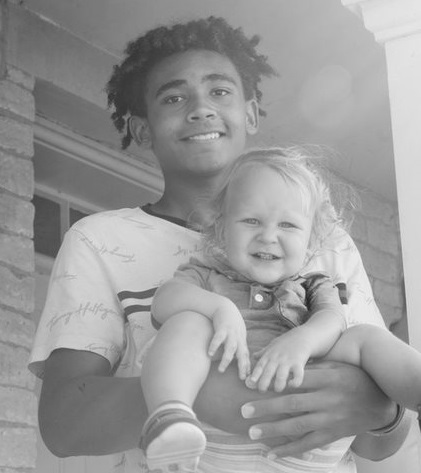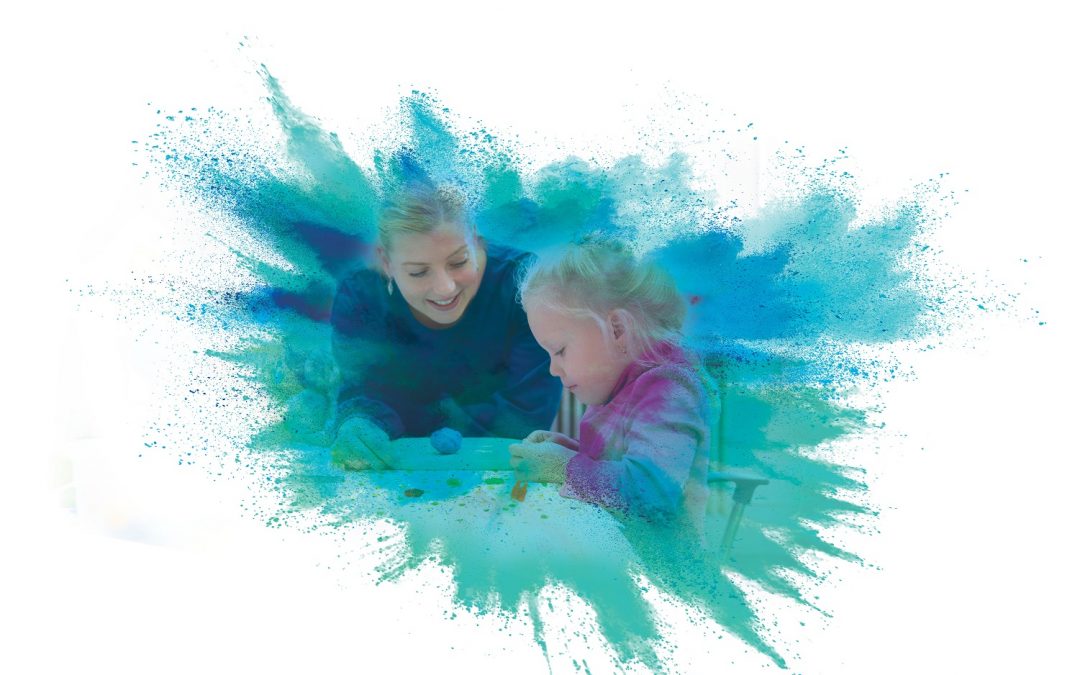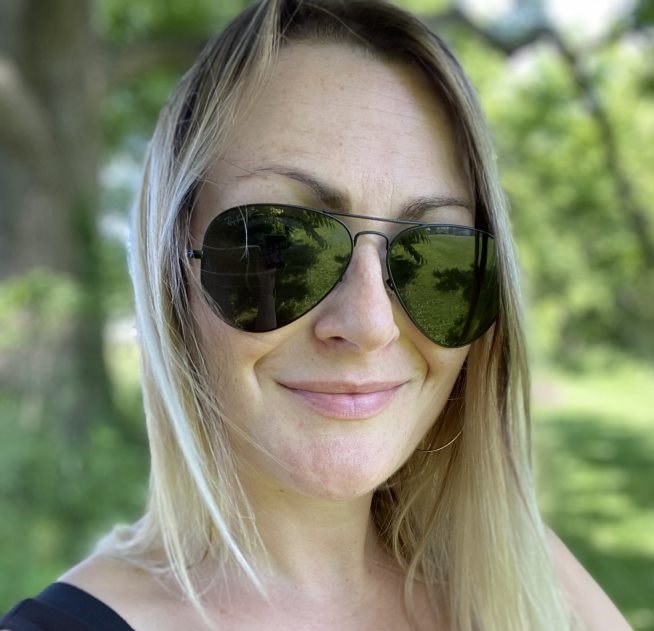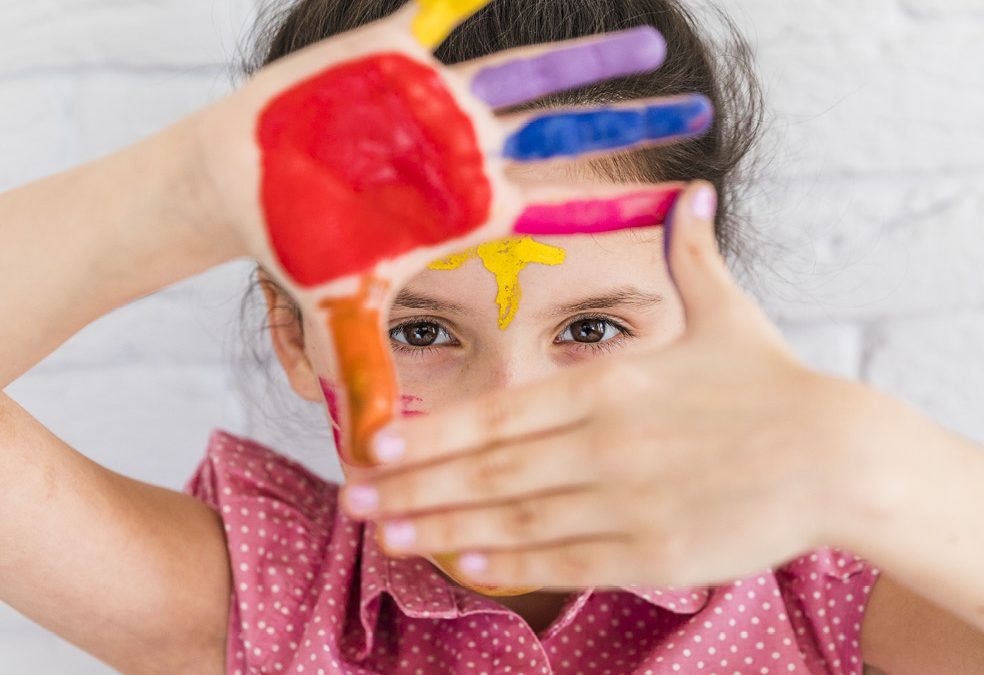
by Jessie Cooper | Jun 23, 2021
Okay, so at this point, you and the nation might be sick of the quote from Glennon Doyle about the cheetah realizing she is not crazy, she is trapped from her wild. I’m going to pre-apologize for bringing it up again if you are one of the people sick of that quote, but it’s a foundational piece of wisdom for me.
I’m going to do a quick recap for those of you who haven’t read,” Untamed.” Tabitha is a cheetah at a zoo who Glennon observes regally pacing the cage. Glennon goes on with the narrative that perhaps Tabitha believes herself to be crazy, dreaming of the hunt and ink-black skies. Glennon writes, “you’re not crazy, you’re a goddamn cheetah.” In this chapter, Glennon writes that when you feel you are crazy and your gut tells you that perhaps you are sane you should always consider that you are not, in fact, crazy; maybe something is wrong on the outside and there nothing is wrong with you.
Hearing Yourself
Last week I wrote to you about setting boundaries and quieting the noise from the stands of the outside world. I want you to become quiet so you can hear yourself. When we are taking in the messages from other people, especially when those messages are loud and shaming, we lose ourselves–our wildness. In losing yourself, the people in the stands start to decide how your life goes and they do not always have your best interest at heart; they have theirs. Above all else, it is incredibly important to never lose who you are and to be able to come home and listen to the voice in your heart that guides you.
As an empath, I really, really do not like looking at injustice. When I see something that tells me justice is at risk I take on the emotions of others. I want to put myself in their shoes, hear their story, and feel the pain of those experiencing the injustice so I know what to do next. For this reason, looking at injustice is incredibly hard but also incredibly important for me. I have to put in a lot of self-care and take time grounding myself before I approach circumstances in life that need to change for the better. When I don’t start by grounding myself I’m pretty sure I come off wild when approaching an injustice. But my wildness doesn’t make me crazy, I’m a goddamn cheetah.
I know many other people that take on the emotions and opinions of others only to find themselves lost. Personally, as a survivor of domestic violence, I know what this feels like firsthand. In speaking up about domestic violence in a rural setting I’ve been met with adversities I didn’t know were possible. Leaving the abuse was the hardest thing I had done until that point. Walking into a system that is not yet set up to tackle the many forms of domestic violence is harder.
Helping Others, Helping Yourself
I’m very lucky with my line of work. When I see basic needs or an injustice that needs attention, care, and a new level of support I get to choose how I approach it. I know I take on the emotions of others who are suffering (joy as well, but suffering is what I want to fix…) so I’m able to check myself in a professional setting. I’ve spent almost a decade as a business owner learning how to do this. In the beginning, it wasn’t pretty, there was a lot of puffing up and shrinking down that I wrote about last week. Now I know that staying true to myself is the number one thing I can do in order to design systems from my company (and the world) that truly create lasting change.
Staying true to myself personally has been much harder these past five years. In reclaiming my voice over the past seven months I’ve definitely puffed up and shrunk down all the while asking for the grace to stand my sacred ground. Breathing deeply into my belly to remember I’m a goddamn cheetah, as I’m unfortunately met with victim shaming and miseducation surrounding domestic violence. Just yesterday I was asked to say, “domestic abuse,” because violence misleads everyone and makes them uncomfortable.
Do you know what makes me uncomfortable? People being violent or abusive to other people. Not the goddamn word a survivor chooses to use about their own experience.
Giving Grace to Others
It is in remembering my wild and personal experiences that I know all people deserve to live free of injustice. This has given me the strength to apply care to myself in order to do personally what I’ve done professionally for so many years. I have to give grace to those in the stands with especially ugly jeers because they have not yet woken up. They are afraid, uncomfortable, and they are lashing out. If I took their screams as gospel I would lose my life. I almost did less than a year ago.
Remembering that I am a good, kind, passionate, smart woman helps me wash the dust off my bloody knees as I stand against these crowds and respond. Not responding with hate to their noise but with love for myself. It’s easier for people to tell us we’re crazy and dismiss our life experiences that cause them discomfort. Accountability can feel life-threatening to those lost in shame or guilt. Accountability also means the just will prevail while the unjust fail. Those who hold perceived power over others just to keep it (and other resources) for themselves are loud as fuck. What they lack, however, is kindness. You and I, gleaming cheetahs, are filled with kindness and love. We do not deserve to be gaslit away from a life that is worth living, our voices tamed. We deserve to be heard and loved.
Stop the victim shaming. May all women, men, and children be free and safe. Fight for who you are and a world worth living in and a world worth leaving behind for our children.
Xoxo,
Jessie

by IABA Team | Jun 22, 2021
CLICK HERE FOR PART 1
What Does an ABA Program Involve?
Good ABA programs for autism are not “one size fits all.” ABA should not be viewed as a canned set of drills. Rather, each program is written to meet the needs of the individual learner.
The goal of any ABA program is to help each person work on skills that will help them become more independent and successful in the short term as well as in the future.
Planning and ongoing assessments are essential parts of a good ABA therapy program. A qualified and trained behavior analyst (BCBA) designs and directly oversees the program. They customize the ABA program to each learner’s skills, needs, interests, preferences, and family situation.
The BCBA will start by doing a detailed assessment of each person’s skills and preferences. They will use this to write specific treatment goals. Family goals and preferences may be included, too.
Treatment goals are written based on the age and ability level of the person with ASD. Goals can include many different skill areas, such as:
- Communication and language
- Social skills
- Self-care (such as showering and toileting)
- Play and leisure
- Motor skills
- Learning and academic skills
The instruction plan breaks down each of these skills into small, concrete steps. The therapist teaches each step one by one, from simple (e.g. imitating single sounds) to more complex (e.g. carrying on a conversation).
The BCBA and therapists measure progress by collecting data in each therapy session. Data helps them to monitor the person’s progress toward goals on an ongoing basis.
The behavior analyst regularly meets with family members and program staff to review information about progress. They can then plan ahead and adjust teaching plans and goals as needed.
ABA Techniques and Philosophy
Instructors use a variety of ABA procedures. Some are directed by the instructor and others are directed by the person with autism.
Parents, family members, and caregivers receive training so they can support learning and skill practice throughout the day.
The person with autism will have many opportunities to learn and practice skills each day. This can happen in both planned and naturally occurring situations. For instance, someone learning to greet others by saying “hello” may get the chance to practice this skill in the classroom with their teacher (planned) and on the playground at recess (naturally occurring).
The learner receives an abundance of positive reinforcement for demonstrating useful skills and socially appropriate behaviors. The emphasis is on positive social interactions and enjoyable learning.
The learner receives no reinforcement for behaviors that pose harm or prevent learning.
ABA is effective for people of all ages. It can be used from early childhood through adulthood!
Who is Qualified to Provide ABA services?
A board-certified behavior analyst (BCBA) provides ABA therapy services. BCBAs are required to have either a master’s degree or PhD in psychology or behavior analysis and be licensed in the state they practice in.
ABA therapy programs also involve therapists, or registered behavior technicians (RBTs). These therapists are trained and supervised by the BCBA. They work directly with children and adults with autism to practice skills and work toward the individual goals written by the BCBA. You may hear them referred to by a few different names: behavioral therapists, line therapists, behavior tech, etc.
Does ABA Therapy Work?
ABA is considered an evidence-based best practice treatment by the US Surgeon General and by the American Psychological Association.
Evidence-based means that ABA has passed scientific tests of its usefulness, quality, and effectiveness. ABA therapy includes many different techniques. All of these techniques focus on antecedents (what happens before a behavior occurs) and on consequences (what happens after the behavior).
More than 20 studies have established that intensive and long-term therapy using ABA principles improves outcomes for many but not all children with autism. “Intensive” and “long term” refer to programs that provide 25 to 40 hours a week of therapy for 1 to 3 years. These studies show gains in intellectual functioning, language development, daily living skills and social functioning. Studies with adults using ABA principles, though fewer in number, show similar benefits.
Is ABA Covered by Insurance?
Sometimes. Many types of private health insurance are required to cover ABA services. This depends on what kind of insurance you have, and what state you live in.
All Medicaid plans must cover treatments that are medically necessary for children under the age of 21. If a doctor prescribes ABA and says it is medically necessary for your child, Medicaid must cover the cost.
ABA Therapy from IABA Consultants
If you have questions regarding autism treatment with ABA therapy, we are here for you! Our goal is to make sure no family is turned away due to financial constraints. Our therapy team would love to talk to you. Find the location closest to you and give us a call. We’re here for you.
Sources
Autism Speaks ABA Primer

by IABA Team | Jun 15, 2021
What is Applied Behavior Analysis? Applied Behavior Analysis (ABA) is a therapy based on the science of learning and behavior.
Behavior analysis helps us to understand:
- How behavior works
- How behavior is affected by the environment
- How learning takes place
ABA therapy applies our understanding of how behavior works to real situations. The goal is to increase behaviors that are helpful and decrease behaviors that are harmful or affect learning.
What Does ABA Therapy Help With?
- Increase language and communication skills
- Improve attention, focus, social skills, memory, and academics
- Decrease problem behaviors
The methods of behavior analysis have been used and studied for decades. They have helped many kinds of learners gain different skills – from healthier lifestyles to learning a new language. Therapists have used ABA to help children with autism and related developmental disorders since the 1960s.
How Does ABA Therapy Work?
Applied Behavior Analysis involves many techniques for understanding and changing behavior. ABA is a flexible treatment:
- Can be adapted to meet the needs of each unique person
- Provided in many different locations – at home, at school, and in the community
- Teaches skills that are useful in everyday life
- Can involve one-to-one teaching or group instruction
Positive Reinforcement & ABA Therapy
Positive reinforcement is one of the main strategies used in ABA. When a behavior is followed by something that is valued (a reward), a person is more likely to repeat that behavior. Over time, this encourages positive behavior change.
First, the therapist identifies a goal behavior. Each time the person uses the behavior or skill successfully, they get a reward. The reward is meaningful to the individual – examples include praise, a toy or book, watching a video, access to a playground or other location, and more.
Positive rewards encourage the person to continue using the skill. Over time this leads to meaningful behavior change.
Antecedent – Behavior – Consequence
Understanding antecedents (what happens before a behavior occurs) and consequences (what happens after the behavior) is another important part of any ABA program.
The following three steps – the “A-B-Cs” – help us teach and understand behavior:
- An antecedent: this is what occurs right before the target behavior. It can be verbal, such as a command or request. It can also be physical, such a toy or object, or a light, sound, or something else in the environment. An antecedent may come from the environment, from another person, or be internal (such as a thought or feeling).
- A resulting behavior: this is the person’s response or lack of response to the antecedent. It can be an action, a verbal response, or something else.
- A consequence: this is what comes directly after the behavior. It can include positive reinforcement of the desired behavior or no reaction for incorrect/inappropriate responses.
How ABA ABCs Help
How different consequences could affect whether the behavior is likely to happen again
EXAMPLE:
Antecedent: The teacher says “It’s time to clean up your toys” at the end of the day.
Behavior: The student yells “no!”
Consequence: The teacher removes the toys and says “Okay, toys are all done.”
How could ABA help the student learn a more appropriate behavior in this situation?
Antecedent: The teacher says “time to clean up” at the end of the day.
Behavior: The student is reminded to ask, “Can I have 5 more minutes?”
Consequence: The teacher says, “Of course you can have 5 more minutes!”
With continued practice, the student will be able to replace the inappropriate behavior with one that is more helpful. This is an easier way for the student to get what she needs!
ABA Therapy from IABA Consultants
If you have questions regarding autism treatment with ABA therapy, we are here for you! Our goal is to make sure no family is turned away due to financial constraints. Our therapy team would love to talk to you. Find the location closest to you and give us a call. We’re here for you.
Sources
Autism Speaks ABA Primer

by Jessie Cooper | Jun 9, 2021
Last week I wrote to you about a new writer coming on to IABA to bring you content about autism and parenting. I wanted to let you know that my blogs have become my sacred space and I want to keep writing for me, hoping it serves you too. I believe my readers to be those who are looking to embrace their hearts and live their lives unapologetically and full of joy. I believe my readers are willing to look at pain, fear, shame, and guilt, and walk through it to bring understanding and shed light on what doesn’t serve them. This is hard as hell. It’s also totally worth it.
This week I want to write about my hope for you and me; our tribe. You see, my hope feels simple, yet I have felt damned from the time I was able to see it burning in my heart all those decades ago. I read a book to my boys recently titled “What Do You With An Idea?” In the book, a little boy keeps seeing an idea. The idea follows the boy and he ignores it. The boy is scared that other people will make fun of him for having this idea but the idea won’t go away. Eventually, the boy declares, “So what! This is my idea,” and goes on to learn that if you take care of your idea you can change the world.
I am not so bold to think that I can change the world with an idea but I am hopeful the world can change with collective ideas and actions. That we can all be as brave as the little boy in the story and honor ourselves and our ideas. Here is mine.
Choosing Kindness First
The hope and idea I have been living my entire life with is that humans can choose kindness first for themselves, then show it to others. That’s it. That’s my idea. I told you it feels simple, yet it ripped me apart for as long as I tried to embrace it. You see, I had a misconception of kindness and compassion because the world was telling me I was wrong. The world was defining what kindness looks like for a woman. Let me tell you what I was told. If you are a woman, maybe it even sounds familiar.
Kindness is noticing the needs of others. A good woman attends to the needs of others. Kindness is being polite. Do not speak in a harsh tone, raise your voice, swear, or insert your opinion where it may offend or even inconvenience others. Kindness is conforming; you do not want to make other people uncomfortable. Keep your appearance and demeanor in a way that does not offend. Kindness is being a polite little girl who grows up to be a good wife. A kind wife always listens to her husband. Men are, of course, here to protect us.
Fuck all that.
I read a book, “Brave, Not Perfect,” by Reshma Saujani, that talks extensively about the way in which society has indoctrinated women to be submissive. I shudder as I write the word ‘submissive.’ Ask my parents if they can put the word submissive and Jessie in a sentence. Nope. Not possible. Even though the US and many other countries have come a long way in some aspects, in many others it has not. We are still working against the narrative set by our white male forefathers over 200 years ago.
Shaping Our Future
Think about it. We have an entire political system that works on making amendments to words written exclusively by white men almost 250 years ago. While I would like to believe that there will be an awakening of some sort and that we are shifting toward a future for all, it’s not always easy to feel that way. When the pandemic hit and the tragedies in the black community came to our social forefront I thought to myself, “this is it, this is the bottom, people will wake up.” Some did. Some are using kindness and love to catapult us into a new future. Others continue to bring hate.
In speaking of my dream of kindness for all, the only perspectives I can write from are as a white woman and a mother in the US. I dare not and will not take the voice of the black community, LGBTQ, immigrants, or even men. I have not walked in their shoes and do not know what they were told to conform to or what they have experienced. But this I know to be true: every human being is born with the same worth. Let me say it again; baby, you are born worthy, you do not have to earn it.
As a woman, I tried desperately to earn value by following social norms while trying to fight these same norms. In my mind, I would stand bravely and push through a norm. Then I would fall back into shame. This constant push and pull was taking my life. This is how domestic violence overcame me.
Recognizing Abuse and Domestic Violence
Many people think that as a strong woman it’s not possible to experience, let alone live with, domestic violence and abuse. There is no way a strong or successful woman can live with abuse. I wish this was the case for me, but the truth is that at 34 years old I’m living without abuse in my life for the first time. Yes, I was strong and successful, but I also wanted to be kind and believe others were kind. That everyone is always kind at heart, even if they don’t show it. That when someone was abusing me they just needed a little more love to become the kind person they were born as. This would eventually spiral into, “why don’t they love me enough to stop!” Then I would get stuck. My version of kindness was killing me. Is it killing you?
In leaving domestic violence behind and working with an incredible trauma therapist, as well as having a loving support system, I am learning to apply my first belief about kindness; be kind to myself. This type of kindness takes from no one and offers a warm love to my soul that I’ve needed since the birth of my idea. I believe that if we are not kind to ourselves, which includes looking at ourselves (both the good and the bad), we cannot be kind to others. So I’m looking at myself and I’m asking myself to shed the narrative of kindness as submissive to become the woman I was born to be.
Cut the Noise Out
The world is a noisy place. When you stand up for yourself and what you need, remember that the crowd in the stands gets loud. You must be willing to block out the noise of the crowd to win the battle of your life. The battle to live free and unapologetically as yourself.
There is work to be done, systems that must fall, and people you must be ready to say goodbye to. We need to cut the noise out. But if you follow your heart home to yourself perhaps someday you’ll stand beside me in the ring. Perhaps we’ll build a kind world together.
Miracles and seen in the light, light and strength are one.
Xoxo,
Jessie

by IABA Team | Jun 8, 2021
Applied behavior analysis (ABA) is often described as the “gold standard” for autism treatment. Applied behavior analysis is a system of autism treatment based on behaviorist theories which, simply put, state that desired behaviors can be taught through a system of rewards and consequences.
ABA can be thought of as applying behavioral principles to behavioral goals and carefully measuring the results. While the idea of using rewards and consequences to teach behavior is probably as old as human civilization, the idea of carefully applying rewards and consequences to achieve specific, measurable goals is relatively new.
While many people are strong advocates of ABA because of its demonstrable success in achieving specific outcomes, others believe it is at best disrespectful and, at worst, actually damaging to the individual.
History of ABA Therapy
Dr. Ivar Lovaas, a behavioral psychologist, first applied ABA to autism in the Psychology Department at UCLA in 1987. He believed that social and behavioral skills could be taught, even to profoundly autistic children, through the ABA method.
The idea was (and is) that autism is a set of neurological conditions with topographical symptoms that can be modified. When autistic behaviors are no longer evident to the observer, the assumption is that autism itself has been effectively treated.
Whatever one’s opinion about Lovaas’s approach, his idea turned out to be quite correct: many if not most children who receive intensive ABA training learn to behave appropriately at least some of the time, and some even lose their autism diagnosis after years of intensive therapy.
Over time, Lovaas’s techniques have been studied and modified by therapists with slightly or significantly different visions of behaviorism. Techniques such as “pivotal response” and “language-based ABA” have become well-established autism treatments in their own right.
Several of these techniques bring together ideas from both the behavioral and the developmental realm, meaning that they focus not only on behaviors per se but also on social and emotional engagement.
What Can Children Learn Through ABA?
Most of the time, ABA therapy is intended to increase language acquisition and help get to developmental milestones. For example, ABA may be used to reduce outbursts and tantrums or to teach a child to sit quietly, use words to make requests, or wait for their turn in the playground.
ABA can also be used to teach simple and complex skills. For example, ABA can be used to reward a child for brushing his teeth correctly, or for sharing a toy with a friend.
While classic ABA can be used in a “natural” setting (a playground, for example), it is not intended to build emotional skills. So, for example, while ABA might teach a child to shake hands or greet another person with a handshake, it won’t help that child to feel an emotional connection with another person.
It takes an extraordinary therapist to use ABA to teach academic content, imaginative or symbolic thinking, or empathy.
How Does ABA Therapy Work?
The most basic Lovaas method starts with “discrete trials” therapy. A discrete trial consists of a therapist asking a child for a particular behavior (for example, “Johnny, please pick up the spoon”).
If the child complies, he is given a “reinforcer” or reward in the form of a food treat, a high five, or any other reward that means something to the child. If the child does not comply, he does not receive the reward, and the trial is repeated.
The specific content of discrete trial therapy is based on an evaluation of the individual child, his needs, and his abilities. So a child who is already capable of sorting shapes would not be asked to sort shapes indefinitely for rewards—but would focus on different, more challenging social and/or behavioral tasks.
The very youngest children (under age 3) receive a modified form of ABA which is much closer to play therapy than to discrete trials. As they master behaviors, well-trained therapists will start to take children into real-world settings where they can generalize the behaviors they have learned and incorporate them into ordinary social experiences.
ABA can also be used, in one of its many forms, with older children, teens, or even adults. Discrete trials ABA is still in use in some settings, and for some children. Other forms of ABA, however, are becoming increasingly popular, such as precision teaching.
In addition, rather than providing 1-to-1 therapy in a classroom or office, many therapists are now administering ABA in natural settings such as playgrounds, cafeterias, and community locations. This approach makes it easier for children to immediately use the skills they learn in a real-world situation.
Is ABA Right for Your Child?
ABA is everywhere, it’s covered by insurance, and it helps children with autism to use “expected” behaviors and control some of their more challenging impulses. These behavioral skills can make a big difference in how well your child manages school and social experiences.
A board-certified analyst (BCBA) provides ABA therapy services. ABA therapy programs also involve therapists or registered behavior technicians. These therapists are trained and supervised by the BCBA.
As with many approaches to autism, ABA is certainly worth a try, as it is the only evidence-based therapy for autism. Before getting started, however, be sure your child’s therapist is trained and knows how and where they will be working with your child, and work with your therapist to set up measurable goals. Keep a close eye on the process and outcomes.
Most importantly, be aware of your child’s responses to the therapist and the therapy. Is she excited when she “gets to” work with her therapist? Is she responding to the therapist with smiles and engagement? Is she learning skills that are helping her in her daily life?
If the answers are “yes,” you’re moving in the right direction. If not, it’s time to reassess.
ABA Therapy from IABA Consultants
If you have questions regarding autism treatment with ABA therapy, we are here for you! Our goal is to make sure no family is turned away due to financial constraints. Our therapy team would love to talk to you. Find the location closest to you and give us a call. We’re here for you.
Sources
Verywell Health ABA Blog






